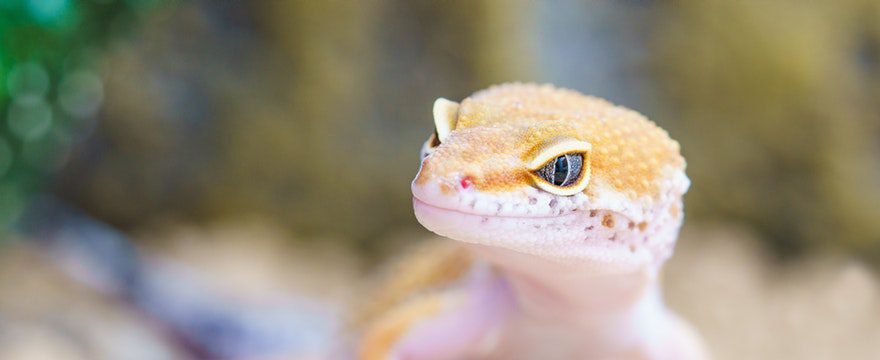Leopard Gecko Care Sheet
Leopard Gecko Care Sheet – This care sheet contains recommendations from our shop assistants.
General Care
A leopard gecko can grow around 15 – 25 centimetres and live up to 10 – 20 years in captivity. They prefer to live alone but can become hand tame if enough time is dedicated. A healthy leopard gecko should have bright eyes and a thick tail, its belly should only touch the floor when resting.
Housing
The minimum vivarium size for a juvenile leopard gecko should be in the region of 60x38x30cm but a larger enclosure is required for an adult. Leopard geckos are solitary animals and may become stressed if kept in a group. Leopard geckos can be kept in pairs ensuring the enclosure is large enough and there are enough places to hide, but this is NOT RECOMMENDED. The recommended substrate is Leo Life, as it has a variety of textures, and moss is needed for shedding.
Heating
Leopard geckos are ECTOTHERMIC meaning they use their environment to control their body temperature. You will need to create THERMOGRADIENT by positioning a heat bulb at one end of the enclosure, leaving the other end cool. Low humidity is required.
The heat bulb should be plugged into a thermostat to ensure it stays at the right temperature. UV is not necessary, but it is recommended. Hides need to be positioned on both warm and cools sides of the enclosure.
Lighting
Leopard geckos are nocturnal animals, therefore, need minimal light exposure. However, a light in the gecko’s enclosure can be used to maintain the temperature. We recommend using a ceramic heat lamp, these do not emit any light.
Feeding
Leopard geckos mainly feed on invertebrates in the wild. In captivity, feed a variety of different live foods, these include crickets, calciworms and locusts (no bigger than the size of the gecko’s head). Your gecko will also enjoy waxworms, these are high in fat so should only be fed as a treat.
Any uneaten bugs should be removed after 15 minutes to ensure they do not bite your leopard gecko. Live food should be fed a good diet (Gut loaded) to ensure they pass on sufficient nutrients to your gecko. Provide crickets, locusts and calciworms with small amounts of fresh veg, dry cereal food or special foods available from pets’ shops.
Captive environments do not supply all the vitamins and minerals available in the wild, so supplements are required. Live foods should be lightly dusted with a vitamin and calcium supplement, before being offered to the gecko.
Water
Water is essential for a reptile’s health. A shallow dish of clean, freshwater must be always provided in the cool end of the enclosure. This must be cleaned daily and immediately if soiled.
Cleaning
Poorly maintained enclosures can put your leopard gecko’s health at risk. Waste should be spot cleaned as soon as it appears. Clean the vivarium and equipment fully once a month using a reptile safe cleaner. Reptiles can carry Salmonella, make sure to wash your hands before and after handling your gecko or its equipment to reduce the risk.
For any further information or advice please feel free to message us on Facebook or contact the store on 01902 494860




